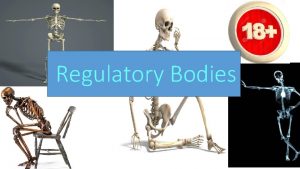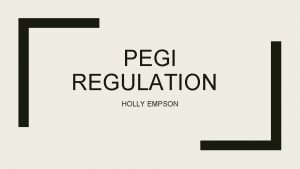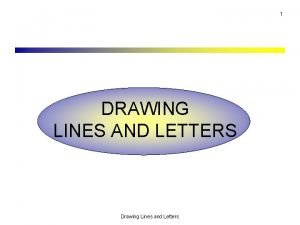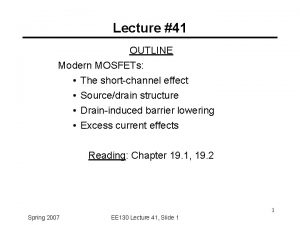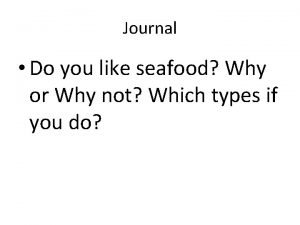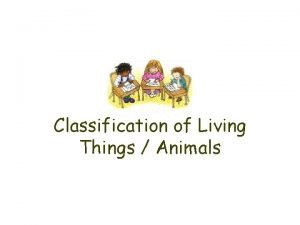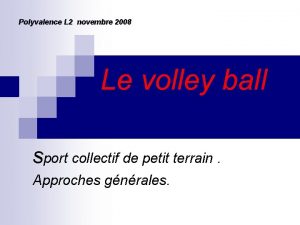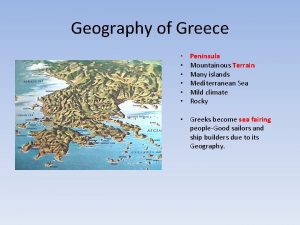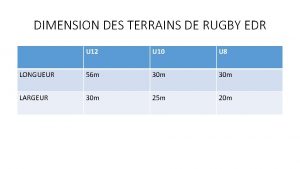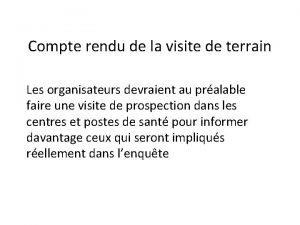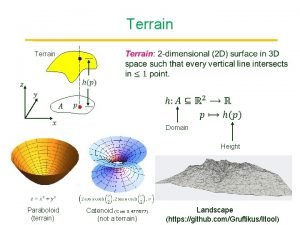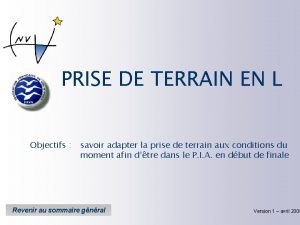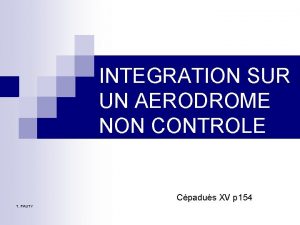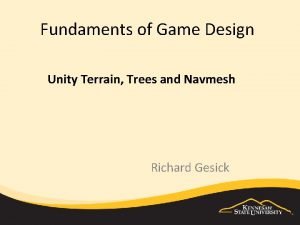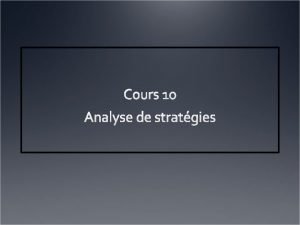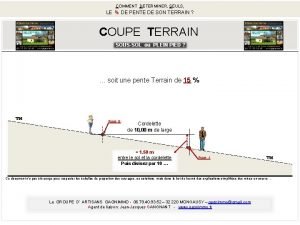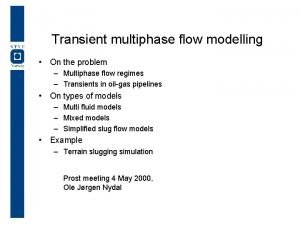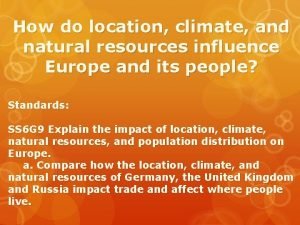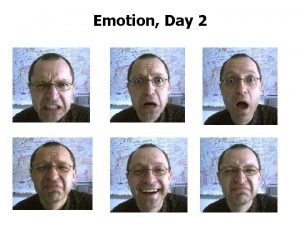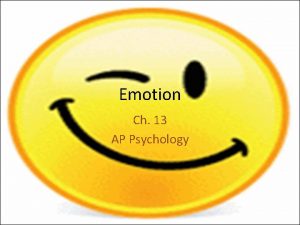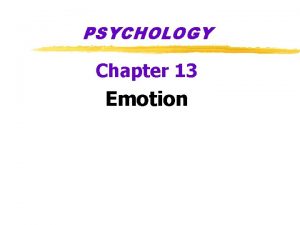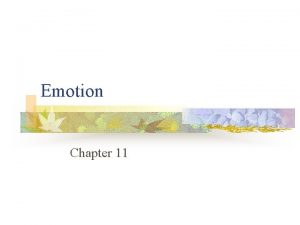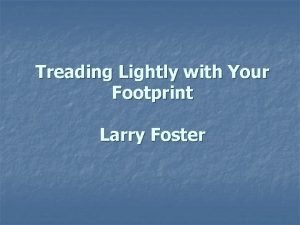Media and emotion Lightly covered terrain Emotion and



















































- Slides: 51

Media and emotion Lightly covered terrain

Emotion and entertainment • Entertainment usually is tied to being ‘moved’ by a media experience – Arousal is tied to emotion

What do we mean by “emotion”? • Commonly understood but very hard to define

Defining emotion • “Emotion is complex, and the term has no single universally accepted definition. Emotions are mental states that arise spontaneously, rather than through conscious effort. ” • Another view states that “Emotions are physical expressions, often involuntary, related to feelings, perceptions or beliefs about elements, objects or relations between them, in reality or in the imagination. ” – Wikipedia

Our view • Let’s argue that an emotion is a complex of beliefs, arousal and valence of affect. – You don’t always have control over your emotions – Emotions drive action – Emotions organize cognitive and behavioral processes • Motivational

• “Sloman and others explain that the need to face a changing and unpredictable world makes emotions necessary for any intelligent system (natural or artificial) with multiple motives and limited capacities and resources. ” – Current research suggests that emotion makes up an essential part of human decision-making, including longterm planning • Wikipedia

Views of emotion • Scholarly views concerning emotion range along a number of dimensions: – Some argue that no special system exists to process emotions, while others see special brain functions and structures for emotion – Some think emotions are immediate and prior to thinking, while others see emotions as a result of thinking – Some see emotions as separate from reasoning while others see them as tied together – Some see emotions as innate while others think they are learned

Influence of culture • “specific emotional responses, as well as a group's interpretation of their significance, may be influenced by cultural norms of propriety. For instance, certain emotions such as love, hate, and the desire for vengeance are treated very differently in differing societies. ” – Wikipedia

• Contrary to this view, Paul Ekman has shown that at least some facial expressions and their corresponding emotions are universal across human cultures and are not culturally determined. These universal emotions include anger, disgust, fear, joy, sadness and surprise.

evidence for innateness of (some) emotions 1) similar form across species; 2) similar form from childhood to adulthood; expressed before learning can take place; 3) similar across cultures; 4) similar in blind and sighted people. – http: //emotion. bme. duke. edu/Emotion/Emo. Res/Psych/Cog. Exp/Behav. html

Physical responses to emotion • The body frequently responds to Shame by warmth in the upper chest and face, Fear by a heightened heartbeat, increased "flinch" response, and increased muscle tension. The sensations connected with anger are nearly indistinguishable from fear. Happiness is often felt as an expansive or swelling feeling in the chest and the sensation of lightness or boyancy, as if standing underwater. Sadness by a feeling of tightness in the throat and eyes, and relaxation in the arms and legs. Desire can be accompanied by a dry throat and heavy breathing.

• A broad consensus has emerged on what we might call adequacy conditions [for] any theory of emotion. – emotions are typically conscious phenomena; yet – they typically involve more pervasive bodily manifestations than other conscious states; – they vary along a number of dimensions: intensity, type and range of intentional objects, etc. – they are reputed to be antagonists of rationality; but also – they play an indispensable role in determining the quality of life;

– they contribute crucially to defining our ends and priorities; – they play a crucial role in the regulation of social life; – they protect us from an excessively slavish devotion to narrow conceptions of rationality; – they have a central place in moral education and the moral life. • Wikipedia

Relations to others • Much of emotion is based on our relationships with others – Interactions with others – Observation of others – Thoughts about others

Empathy and forms of attachment • Empathy—the experience of understanding the viewpoint of another • Sympathy—feelings for another based on their experience or situation • Parasocial interaction—the feeling that one interacts with a media persona • Identification

Emotion is a hallmark of many media presentations • “Tear-jerker” • Sports • Horror films

However. . . • Our understanding of emotion is pretty limited • Our understanding of the role of media in affecting emotions is more limited yet • The research on media and emotions tends to focus on either love or fear

Media influences over emotion • Para-social interaction, identification with characters in story – Triumph, defeat, joy, sorrow, etc. of character then affects audience as would knowing someone going through the same

Emotional engagement • “Philosophic discussion of viewer involvement with films starts out with a puzzle that has been raised about many art forms: Why should we care what happens to fictional characters? After all, since they are fictional, their fates shouldn't matter to us in the way that the fates of real people do. But, of course, we do get involved in the destinies of these imaginary being. The question is why. ” – Stanford Encyclopedia of Philosophy

Emotional engagement • “One answer, common in the film theory tradition, is that the reason that we care about what happens to some fictional characters is because we identify with them. Although or, perhaps, because these characters are highly idealized — they are more beautiful, brave, resourceful, etc. than any actual human being could be — viewers identify with them, thereby also taking themselves to be correlates of these ideal beings. But once we see the characters as versions of ourselves, their fates matter to us, for we see ourselves as wrapped up in their stories. ” – Stanford Dictionary of Philosophy

However: • We exhibit a wide variety of attitudes toward the fictional characters we see projected on the screen. • We have emotional reactions to characters with whom we did not identify.

• “The general outline of the answer philosophers of film have provided to the question of our emotional involvement with films is that we care about what happens in films because films get us to imagine things taking place, things that we do care about. Because how we imagine things working out does affect our emotions, fiction films have an emotional impact upon us. ” – Stanford Encyclopedia of Philosophy

Explaining the effects of imagination • Philosophers forward two basic accounts to explain the effects that the imagination has upon us. • Simulation theory employs a computer analogy, saying that imagining something involves one having one's usual emotional response to situations and people, only the emotions are running off-line. – Emotions are aroused, but do not lead to a felt need for behavioral action

• This could explain why we enjoy watching things on the screen that we would hate seeing in real life. – Horror shows – Tear jerkers • Simulation theorists say that when we experience an emotion off-line that would be distressing in real life, we may actually enjoy having that emotion in the safety of the off-line situation.

Problems • Why would experiencing distressing emotions offline end up being pleasurable? – There is no convincing explanation • What does it mean for emotions to be running “off-line? ”

Thought theory • An alternative account of our emotional response to imagined scenarios has been dubbed the thought theory. This view says that we can have emotional responses to mere thoughts. – Anger can be brought about by hearing of an injustice

• Thus, our emotions are brought about by the thoughts that occur to us as we are watching a film. When we see the dastardly villain tying the innocent heroine to the tracks, we are both concerned and outraged by the very thought that he is acting in this way and that she is therefore in danger. – We are aware that we are witnessing merely fictional situations, so there is no temptation to take physical action. – As a result, there is no need, says the thought theorist, for the complexities of simulation theory in order to explain why we are moved by the movies.

But. . . • Why should a mere thought, as opposed to a belief, be something that occasions an emotional response from us? – We are quite capable of being aware of horrific things happening to people yet be unmoved by that knowledge. – Since we can't have full-fledged beliefs about the fictional characters in films, the thought theory needs to explain why we are so moved by their fates.

Media influences over emotion • Sound/music – Major/minor key – Melody/dissonance – Volume – Dynamics – Speed – Timbre – Sharpness – Orchestration/richness

• Sad Tragedy Diary Another Auld Lang Syne Fast car

• Happy Wild Night Fun, Fun Officer Krupke

Excited In America Rain King

Poignant • Fast Car • There’s a Place for Us • A Pirate Looks at Forty

Music and emotion • Leonard Bernstein borrowed from Chomsky’s ideas and applied them to music, claiming that there is an innate code buried in the musical structure which we are biologically endowed to understand. • He tried to show the underlying strings, the basic meanings behind music, are transformed by composers into the surface structure of a composition. • Bernstein thought that the main difference between language and music is that music amplifies the emotions more effectively, thereby making it more universal.

Manfred Clynes • Clynes has tried to find a way to describe musical communication by making connections between neurophysics, gesture and emotion. • In 1977, Manfred Clynes, a concert pianist and neurophysiologist, presented his theory of Sentics, "the study of genetically programmed dynamic forms of emotional expression. " During the 1950 s, Clynes had invented the term "cyborg" to refer to creatures who have augmented their biological systems with automatic feedback controls. He formulated several theories about sensory perception, including his idea about essentic forms, precise dynamic forms that are characteristic of each emotion.

• One of Clynes’ big breakthroughs was that emotions are not fixed states, but rather transitions (spatiotemporal curves) with particular trajectories. He related these forms to musical structure through a theory of inner pulse, which he felt was unique to each composer – a kind of personal signature encoded in the shapes of the pulses on many levels simultaneously. For Clynes, the inner experience of music is reflected when the electrical impulses in the brain are mechanically transduced, for example, by the expressive shape of finger pressure.

Expression rules research • Many have assumed that the greatest part of the emotional power of music comes in the variations of tempo, dynamics, and articulation. Several researchers have also assumed that these variations conform to structural principles and have attempted to demonstrate these expression rules. • David Epstein makes a case that the kind of variation in musical structures such as tempo and dynamics constitute movement, and that this movement is highly correlated with emotional responses to music.

• Paul Hindemith wrote that tempi that match the heart rate at rest (roughly 60 -70 beats per minute) suggest a state of repose. Tempi that exceed this heart rate create a feeling of excitation. He considered this phenomenon to be fundamental to music, and wrote that mood shifts in music are faster and more contrasting than they are in real life.

Video influences over emotion • Pacing • Camerawork – Movement – Distance – Focus – Color

• A team led by Simone Dalla Bella tested children ranging in age from three to eight, as well as adults, by playing musical excerpts for them and asking whether the music was happy or sad. The participants listened to 32 pieces of classical music, 16 of which were determined to be “happy” and 16 “sad” in a previous study. In addition, the same pieces were systematically altered by changing mode (from major to minor key or vice versa), tempo, or both. Sad music is generally played in a minor key at a slow tempo, and happy music is usually played fast and in a major key.

• The researchers found that when happy music was slowed down to the same tempo as sad music, it no longer sounded musical; likewise for sad music played as fast as happy music, so they settled on a moderate tempo in between the happy and sad tempi (about 84 beats per minute), and adjusted both the happy and sad music to be played at this rate.


• Dalla Bella and her colleagues argue that the ability to understand mode as an expression of emotion is learned between the ages of five and six, but they are less certain about when tempo becomes associated with emotion. It’s possible that the reason three- and four-year-olds were unable to perform the task is related to not understanding the procedure of pointing to happy and sad faces, or to unfamiliarity with the classical music samples. What is certainly clear is that six-year -olds have mastered matching both tempo and mode changes to their corresponding emotions. • Dalla Bella, S. , Peretz, I. , Rousseau, L. , & Gosselin, N. (2001). A developmental study of the affective value of tempo and mode in music. Cognition, 80, B 1 -B 10.

Emotion in Advertising • One of the most powerful tools for advertisers is emotion – Memorable – Persuasive – Available through several advertising media – Attention-getting

Emotion in advertising

Show what people love • Almost everyone loves country, family, and children. And we all respond to the bond of love between mother and child. Patriotic themes work as well in China as they do in America or Russia. • In some countries, people react emotionally to animals, such as dogs or cats or tiger cubs -- especially babies of the species. • Mc. Donald's, the beef burger king, frequently uses kids in their ads, in part to transfer the positive feeling people have about children to the restaurant. Cows find these ads absolutely disgusting, but who cares how cows feel? They don't have any money. – © Steven Lorin Mc. Namara. All rights reserved.

Use music that elicits an emotional response • An excellent example was a television commercial for Hong Kong Telecom produced by J. Walter Thompson shortly before the hand-over from Britain to China. The visual track cut back and forth between things that were once only imagined and then finally achieved. One such sequence showed a grainy old black and white shot of a guy with homemade bird wings strapped to his back. Looks like the 1920 s. He jumps off a rock and falls flat on his face. Next you see the space shuttle lift off. • What made the spot great was the sound track, "Imagine" by John Lennon. It was voted best television commercial that year in Hong Kong.

Use stories that have emotional impact • Every society, every community has experienced triumphs and tragedies. These shared experiences can be powerful emotional triggers. • An athlete weeps on the victory stand at the Olympics while her national anthem is played. Or a successful businessman reflects on the sacrifices and hardships his father endured to build the company. • On a more general level, we all share a similar response to emotionally charged situations. The birth of a child. War. Weddings. Political or religious conflict.

Use emotional themes, style and mood • You can effectively employ emotional elements in ads for everything from banking services to personal computers, fashion to fragrances, soup to soap suds. • The Calvin Klein Obsession TVC, "Beyond reason is obsession, " is a portrayal of a man obsessed with a woman. The art direction, music and story work together to trigger feelings - perhaps stir recollections - of passionate love. • This approach relies more on style and mood to break through the clutter, to grab attention. More on the visual. Less on the story line.

• You can see, that instead of persuading with a feature or benefit, ESPs persuade with a feeling, with emotion. • Tip: The use of an ESP is usually a strategic rather than tactical decision. So think it through carefully. And make sure your client is committed to the campaign. • This crazy little thing called love is like dust in the wind. Feelings are transitory. They come, then go. So sure, you can use an emotional visual or headline or storyline to grab an audience, to break through the clutter. But see if you can achieve a transfer of good feelings to the client's product. One way is to get the company or service or product into the story, as the focus of the feeling, as the hero.

Babies one year old react to emotions on TV • Experiment with toys and televised examples of positive and negative emotions being demonstrated in facial expressions – 1 -year olds react to negative but not positive expressions – No difference for 10 -month olds
 Bbfc media aspects covered
Bbfc media aspects covered Pegi media aspects covered
Pegi media aspects covered Convention of lines
Convention of lines Straight and curved line letters and numerals
Straight and curved line letters and numerals Outdoor ethics awareness award
Outdoor ethics awareness award Each column of the periodic table is
Each column of the periodic table is Lightly drawn lines used for lettering
Lightly drawn lines used for lettering Pare culinary definition
Pare culinary definition Retrograde well
Retrograde well Lightly doped drain
Lightly doped drain M.youtube.coм watch
M.youtube.coм watch Mesa and scarp terrain
Mesa and scarp terrain A section of the nile river with rapids and rocky terrain
A section of the nile river with rapids and rocky terrain 5 physiographic provinces of virginia
5 physiographic provinces of virginia You like seafood and i do
You like seafood and i do Invertebrates animals
Invertebrates animals First law bar chart
First law bar chart Os terrain 5 dtm
Os terrain 5 dtm Ts designation
Ts designation Terrain features
Terrain features All terrain vehicle towing capacity 1050lbs
All terrain vehicle towing capacity 1050lbs Rough terrain container handler (rtch)
Rough terrain container handler (rtch) Terrain volleyball dimension
Terrain volleyball dimension Limite terrain badminton simple
Limite terrain badminton simple Enhanced terrain layer
Enhanced terrain layer Hill valley ridge saddle depression
Hill valley ridge saddle depression Draw spur cliff
Draw spur cliff 3 minor terrain features
3 minor terrain features Terrain in greece
Terrain in greece Terrain in france
Terrain in france Ligne terrain rugby
Ligne terrain rugby Exemple de compte rendu de visite de terrain
Exemple de compte rendu de visite de terrain Benthic terrain modeler
Benthic terrain modeler Terrain
Terrain Opengl terrain generation
Opengl terrain generation The terrain domain
The terrain domain Prise de terrain en u
Prise de terrain en u Bus asi
Bus asi Data terrain
Data terrain Integration circuit aerodrome
Integration circuit aerodrome Human terrain system
Human terrain system Marcel bec filet
Marcel bec filet Middle colonies terrain
Middle colonies terrain Land navigation basics
Land navigation basics Unity terrain lod
Unity terrain lod Marketing terrain
Marketing terrain Coupe terrain en pente
Coupe terrain en pente Terrain slugging
Terrain slugging Mexico terrain
Mexico terrain Lidar consortium
Lidar consortium Lastenzeppelin
Lastenzeppelin Terrain à vendre kounoune
Terrain à vendre kounoune
